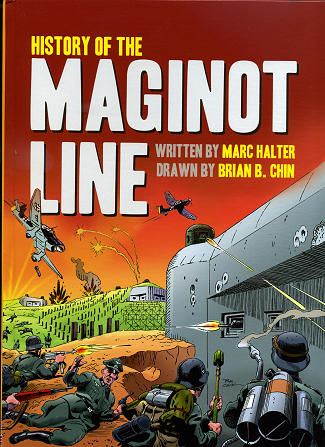 The
Maginot Line was a line forts and other defensive works that ran from the
Mediterranean Sea to the English Channel. Its purpose was to delay the advance
of enemy troops until the nation's army could be mobilized to meet the invaders.
A considerable amount of expense was put into building these fortifications, and
they were considered by many to be the best anywhere in the world.
The
Maginot Line was a line forts and other defensive works that ran from the
Mediterranean Sea to the English Channel. Its purpose was to delay the advance
of enemy troops until the nation's army could be mobilized to meet the invaders.
A considerable amount of expense was put into building these fortifications, and
they were considered by many to be the best anywhere in the world.
Popular thinking has it that the Maginot Line was a huge
failure as it did not stop the onslaught of the German Army in 1940. Perhaps
that is true, but many sections of the Line were so effective that even past the
armistice of June 1940, areas of the line still held out against the Germans. In
the south, the Italians had even a worse time against the section of
fortifications in the alpine border area with one fortification consisting of
just nine soldiers holding off the entire invading force until after the
armistice. Even after the French capitulation, the fortifications were used by
the Germans as storage areas and underground factories as they were pretty much
impervious to bombardment of all types. Post war, several sections were rebuilt
and improved upon to withstand nuclear attach, but after the French pulled out
of NATO in 1966, all work stopped.
The end result is that many of these fortifications are still extant and
quite a few are open to the public, drawing hundreds of thousands of visitors
each year.
Author Marc Halter decided to do this book in the comic
book format that was so typical of many French school books of the 1930s. Along
with artist Brian Chin, he tells the story of the Maginot Line, from the initial
idea of building these forts in the years following World War I to the first
construction starting in the late 1920s. We look at the various features of
these forts, the equipment they used, the weapons contained within and finally,
what it was like to live and fight in these fortresses, both big and small.
These constructs were pretty much devoid of troops until they were needed, in
which cases the soldiers simply moved in as they were already supplied with
food, fuel and ammunition for several months stay.
The book goes into several of the battles held for many
of the fortresses so we can see how well they held up to the German onslaught.
The findings of the book are such that you will be surprised at how well these
fortresses functioned. It makes for a fascinating read and if you do not mind a
book in graphic format, you will find it as interesting and informative as did
I. It is a book I can easily recommend to you..
You can get more information and order yours by visiting
www.casematepublishing.com. My thanks to
Casemate for providing the review book.
March 2012
If you would like your product reviewed fairly and quickly, please
contact
me or see other details in the
Note to
Contributors.
 The
Maginot Line was a line forts and other defensive works that ran from the
Mediterranean Sea to the English Channel. Its purpose was to delay the advance
of enemy troops until the nation's army could be mobilized to meet the invaders.
A considerable amount of expense was put into building these fortifications, and
they were considered by many to be the best anywhere in the world.
The
Maginot Line was a line forts and other defensive works that ran from the
Mediterranean Sea to the English Channel. Its purpose was to delay the advance
of enemy troops until the nation's army could be mobilized to meet the invaders.
A considerable amount of expense was put into building these fortifications, and
they were considered by many to be the best anywhere in the world.